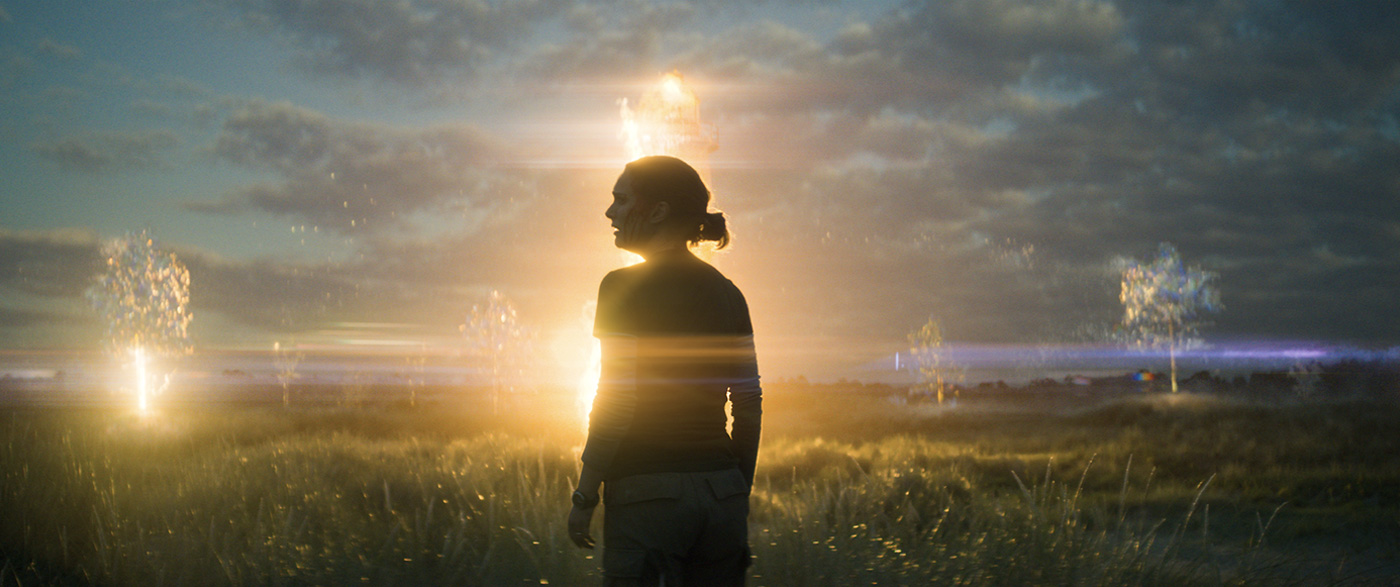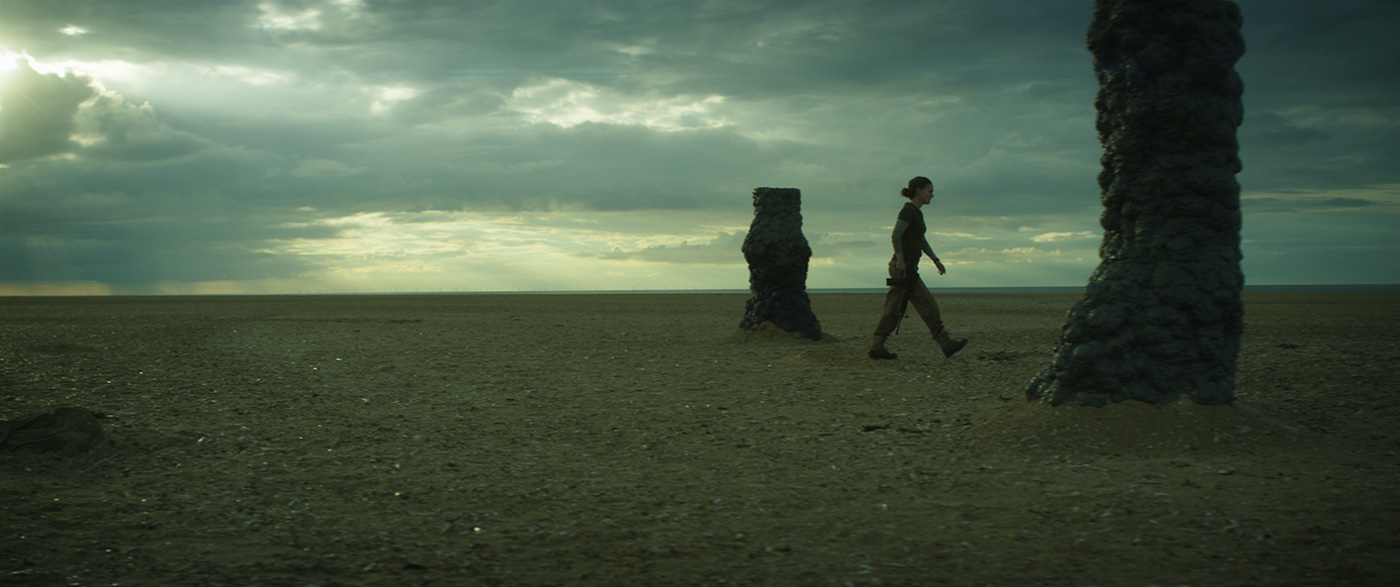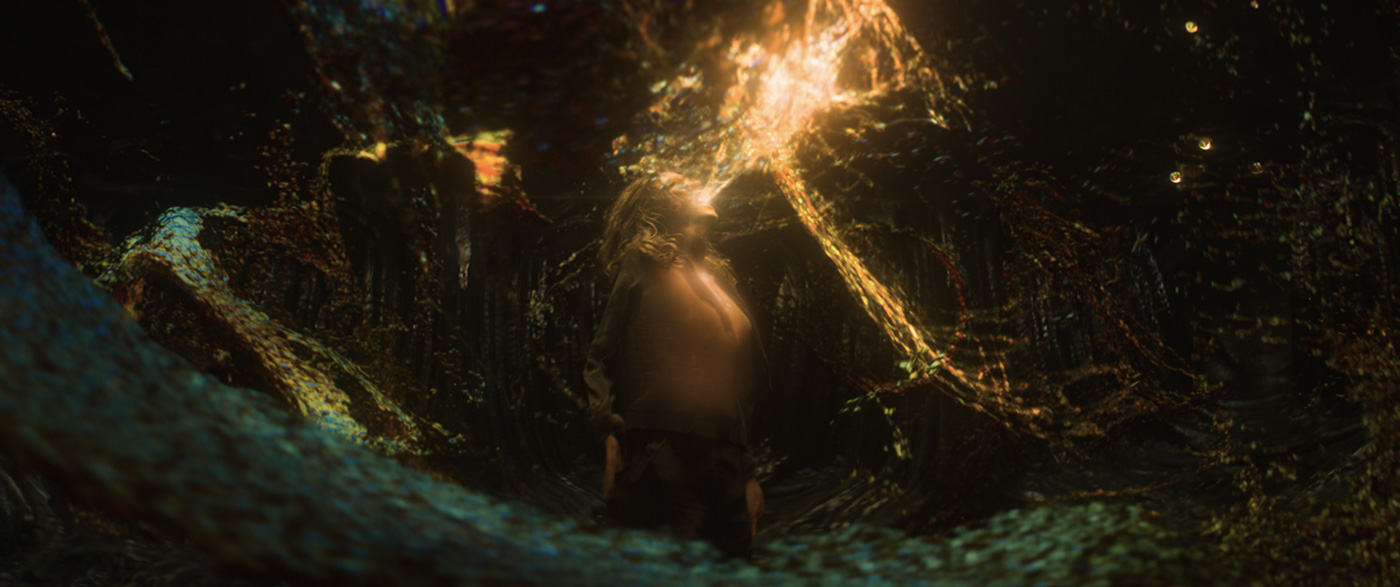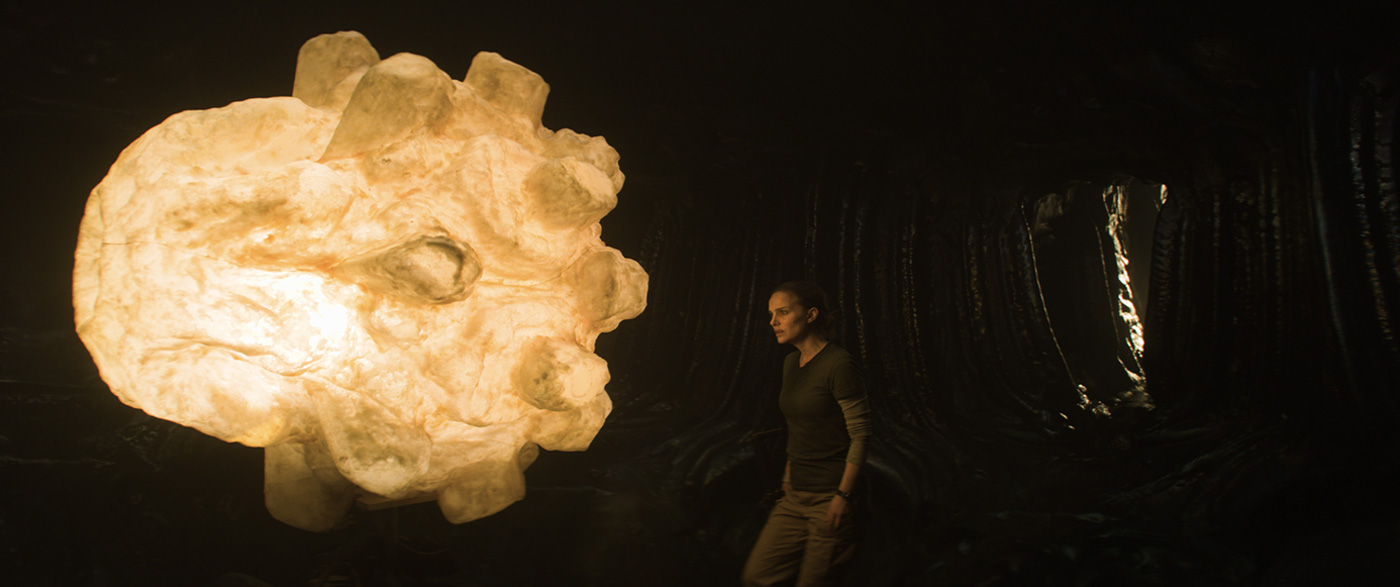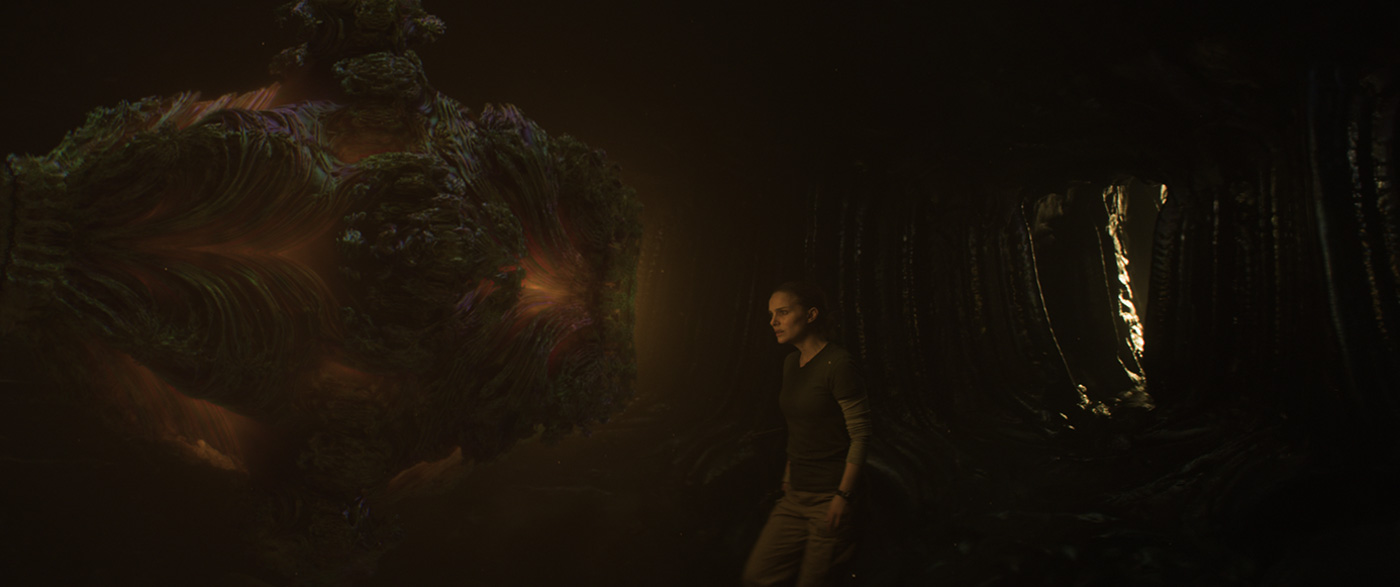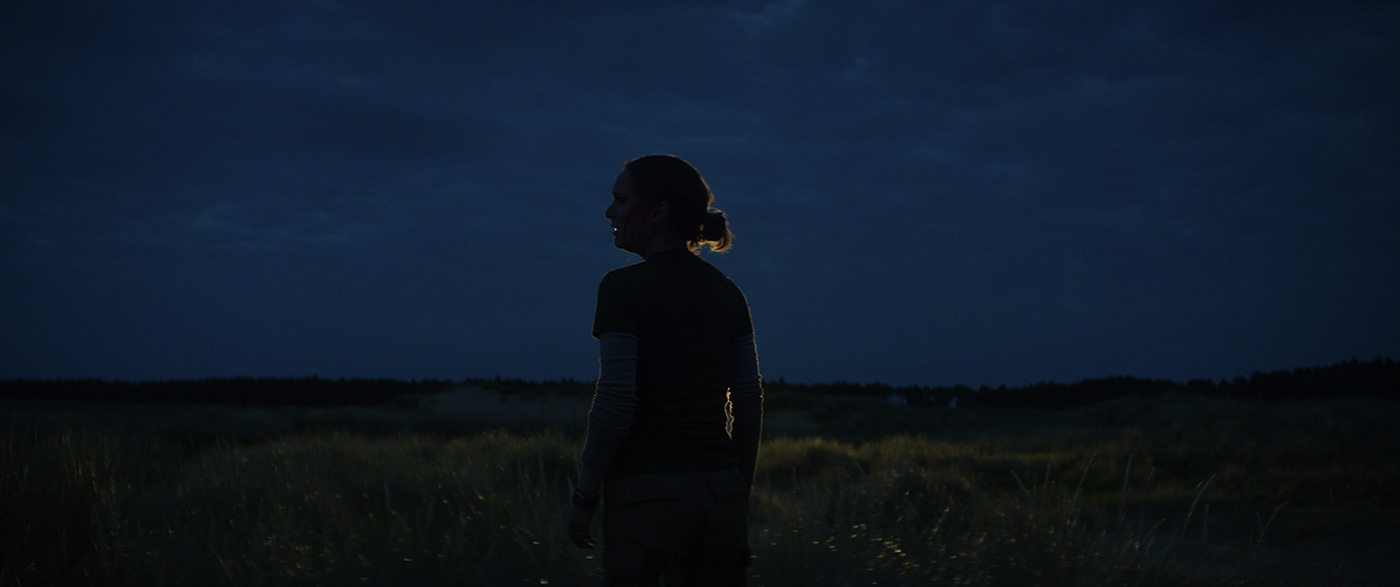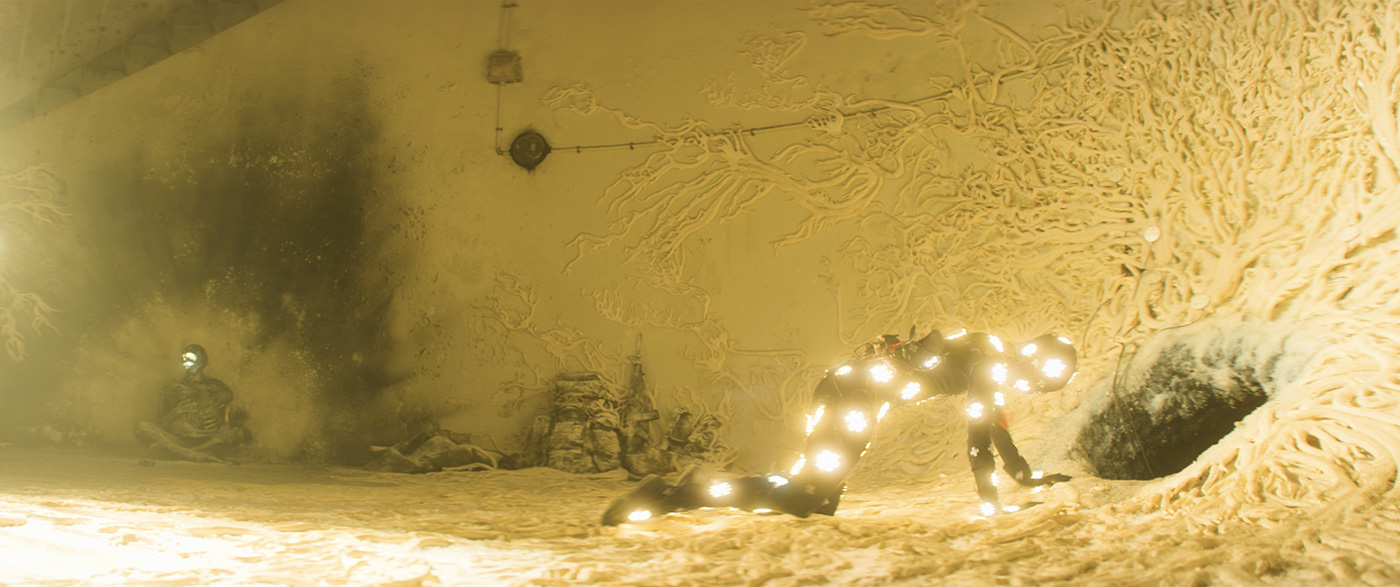Andrew Whitehurst began his visual effects career at Electric Image in 1998. He joined Framestore in 2003. He works on films like LARA CROFT TOMB RAIDER: THE CRADLE OF LIFE, TROY and CHARLIE AND THE CHOCOLATE FACTORY. He then joined Double Negative in 2005 and works on projects such as HARRY POTTER AND THE ORDER OF THE PHOENIX, HELLBOY II: THE GOLDEN ARMY, THE WOLFMAN and SKYFALL. As a VFX Supervisor, he took care of the effects of films like EX MACHINA and SPECTRE.
What is your background?
I studied fine art at college and began work as a runner at a VFX house in the late ’90s. From there I worked on kids TV shows and commercials before my first VFX job as an artist on LARA CROFT TOMB RAIDER: THE CRADLE OF LIFE. I’ve been in VFX ever since as an artist or latterly a supervisor.
How was this new collaboration with director Alex Garland?
Because we had worked together before on EX MACHINA, we were able to hit the ground running on ANNIHILATION: there was no “getting to know you” period. This film is vastly more complex than EX MACHINA, both conceptually and in terms of the execution of the work, so we worked very closely together from day one to think in the abstract about the ideas within the film and then on the actual design. He and I had both had iPads with Procreate so we did a lot of design work by sending each other sketches and working collaboratively that way.
What was his approach and expectations about the visual effects?
Alex is a very collaborative artist so we were all encouraged to be creative and to offer up ideas throughout the production. That applied to everyone on the VFX crew. We knew we wanted to get the best looking work we could and the way to achieve that is to plan as much as possible in advance, make sure we shot everything sensibly, and had a crew who felt invested in the work to persist in the hard graft of producing good work. Alex and I were talking on our way back from a tech recce and we agreed that film-making, as an art form, rewards relentlessly pounding on a creative problem until it’s solved. There are very few flashes of inspiration in film, sadly. So to make sure we had an engaged and excited crew was paramount.
How did you organize the work with your VFX Producer and at Double Negative?
Roma Van Den Bergh was the VFX producer for the show. We had a great working relationship. We hadn’t worked together before but we trusted each other and we looked out for each other’s interests. She looked after the money and time side of the production, which freed me to work with the facilities to produce the best work. The idea was that she didn’t have to worry about how the pictures were going to look, and I didn’t have to worry that we wouldn’t get them done on time.
The same applied with Paul Edwards, the VFX producer at DNEG. He and Roma sorted out the bids and the schedule and I worked on the imagery with Artemis Oikonomopoulou, the CG supervisor, Patrick Nagle, the 2D supervisor, Federico Frassinelli, the FX supervisor, and Gwilym Morris, the animation supervisor.
Can you tell us more about the previz and shooting process?
We didn’t previs anything on the film, mostly for budgetary reasons. We were fortunate to have storyboard legend, Martin Asbury, on the show for a few weeks and he produced some exquisite boards for several of the more action-centric scenes. Alex, Rob Hardy (the DoP), Martin, and I would meet to discuss the sequences and come up with some approaches to how they might be staged, and Martin would go off and draw. We would then reconvene and refine them. The boards weren’t meant to be a shooting bible, and we didn’t stick to them, but they gave us a valuable, commonly understood, starting position that we could work from as we shot.
For most of the shoot we would shoot as you would for non-VFX drama. At the end of a set-up we would get clean plates as necessary, and also shoot HDR lighting reference. For scenes where there was an element that we would be adding in post, like the bear for example, we would make sure to have a performer in some kind of suit representative of the final form. This allowed the actors to interact with something tangible, it allowed Rob to know roughly what the final frame would be so he could frame up accordingly, and for us it gave us appropriate lighting, and physical interaction baked into the plates.
How did you work with the art department for the look of the Shimmer?
The look of the Shimmer is a mixture of Rob Hardy, and gaffer Andy Lowe’s on set lighting, and DNEG’s VFX work. It was a lengthy design process trying out different ideas based on how the plates looked, until we settled on using an unwrapped Mandelbulb fractal shape, and shading it to have the properties of oil on water.
Some of the establishing shots looks like paintings. What kind of references and indications did you receive for those shots?
We looked at a lot of reference. We always do for any design challenge, but this one was especially tricky. We looked at a lot of natural phenomena, such as nacreous clouds, and also at artists like J.M.W. Turner whose skies are so expressive and beautiful. There is a lot of interesting colour in Turner’s paintings and we thought we might be able to use that as a creative springboard. Ultimately we looked to the Mandelbulb research we’d been doing for the alien in the chamber and the shapes in that mathematical form. Those became the basis for the structure of the exterior Shimmer effect.
The women encounter many mutated creatures. Can you tell us more about the beautiful deer and the white alligator?
The design of the creatures varied from beast to beast. The ‘gator was originally designed by Tristan Versluis’ special make-up and animatronics team. They sculpted a full size ‘gator which we used as the basis of our CG build. That was a pure albino ‘gator as that was what the script described. Later on in post-production we felt that the ‘gator didn’t look sick enough so we added lesions, vitiligo, and other skin damage to make the creature look more pitiful and unwell.
The deer was initially designed in my small notebook between takes or on the bus to tech recces. Once I’d got something that Alex was happy with, the sketch was handed over to DNEG’s modeller Luiz Elias who built the creature. The second deer, which has a more diseased and decrepit appearance was designed later in post production when we decided that we needed two, almost identical, deer in the shots.
The most scary creature is the bear. Can you explain in details about its creation?
The bear went through many design phases starting in DNEG’s art department. Andrew Williamson’s team tried a number of ideas, including whether the bear should be a wild pig, before artist Peter Ocampo took a human skull model, a bear skull model and mashed them together in 3D. That gave us something that we all thought had visual impact. The rest of the creature was based on looking at reference images of malnourished polar bears, and apes with vitiligo and alopecia. The face of the bear ultimately retained the skull like look from the initial idea. This design was sculpted in 3D, and that was handed of to Tristan’s onset creature team to fabricate practical bucks and animatronics while DNEG worked on texture, fur, rigging and animation.
How was simulated his presence on-set and for the interactions?
On set we had puppeteered animatronic head and neck that was used for close up interactions with the cast, like when the bear nuzzles Radek. It had hoses fitted so it could exhale and blow the hair of the characters which really helped sell the interaction. For wider shots when the bear is walking around, we used a light weight foam head attached to a roughly sculpted foam body shape that could be worn by a performer. That gave us lighting interaction onto the set and the actors, as well as allowing Rob to line up his shots knowing roughly what the finished frame would look like.
In post we had to paint out the on set buck, composite in the digital bear, and then re apply all the blurring, halation and flare effects back over the top. It was a monumental effort by Patrick Nagle’s 2D team to do this, but I think the results are beautiful.
Can you tell us more about his rigging, animation and fur?
CG Supervisor, Artemis Oikonomopoulou led the 3D design process for the bear, ensuring it was rigged with muscle systems and skin simulation to get the folds in the flesh correct. Because the bear is emaciated, there is quite a lot of loose skin, so correct simulation of this was vital to make the animal as pitiful as it was terrifying. Similarly the fur was groomed to be matted and patchy, to emphasise the diseased state of the beast.
Gwilym’s animation team also worked very hard to perfect the balance of menace and vulnerability in the creature. They found that giving the animal a limp in its back leg helped it seem vulnerable but also maintained the threat that it posed. We found that judging this emotional quality was best achieved by rendering all our look-dev turntables with the walk cycle on it, so the creature felt alive, and not like a taxidermy museum exhibit.
The animation team worked on blocking out the animation in conjunction with Barney Pilling, the editor. Barney did an initial cut based on the performer in the suit which DNEG then animated on top of. Over the course of this we found shots that we needed to make longer or shorter to make the animated performance work, and the edit were able to accommodate that. Once the animation settled down we began to render the bear and composite it into the shots.
Later in the movie, Natalie Portman discover the source of the Shimmer. How did you design this beautiful effect?
The most alien visualisation of the source of the Shimmer was achieved by creating a modified Mandelbulb 3D fractal that Federico Frasinelli developed. It was then rendered with a lava and metal like surface which Thomas Biller looked after. Nico Rigaud then did extensive compositing work to finesse the effect and composite it into the plate. It’s an elegant mixture of procedural geometry, shading and compositing work.
We looked at a lot of ideas about how the alien might look before we settled on the Mandelbulb. We looked at time lapse cell footage, at continually reconfiguring networks that suggest synapses and neurons, as well as more gaseous forms that hinted at structure but in a diffuse volume. Ultimately the weird organic looking procedural nature of the Mandelbulb won the day as the basis of the design.
Did you use procedural tools for his animation?
Yes, the Mandelbulb was created in Houdini, my favourite piece of 3D software!
In the final sequence, Natalie Portman confronts a humanoid creature. How did you approach this character?
The creature was described in the screenplay as androgynous, and featureless, so we initially looked at how cultures throughout history have represented the human form. Cycladic art had many of the featureless qualities we were looking for, and Alberto Giacometti’s sculptures also proved influential. Jonathan Opgenhaffen painted some beautiful concept art that pretty much nailed the look of the creature straight away. We knew that on set the Humanoid would be performed by Sonoya Mizuno, so we made sure that our CG build matched her proportions.
The Humanoid was rigged with a lot of flexibility for the body tracking artists. We knew that we were going to try to use the same technique on the Humanoid as we had on Ava in Ex Machina. We allowed the body track artists the freedom to perfectly mimic the onset performance, and did not add a post animation pass to refine anything, so what you see on screen is the raw performance meticulously copied and adapted to the Humanoid form.
Because of the prismatic nature of the shaders we had to work closely with the colourist on the project, Asa Shoul, to make sure that we were able to preserve all that chroma content right the way through the post production pipeline and the DI.
There are a lot of FX after this sequence. How did you handle these simulations?
The collapsing CG trees were simulated by Stephanie Whitmarsh and she spent a lot of time not only getting the feel of the sims to be physical but also delicate, whilst making sure that the timings of the trees falling felt right in the speed of the edit. It was a delicate balancing act which she managed brilliantly. The trees were composited by Cleve Zhu, who has a great eye and helped tie the CG trees in with the on set phosphor flare lighting that Hayley Williams’ SFX crew had contributed.
The fire inside the lighthouse and on the Humanoid was led by Federico Frassinelli and his FX team. There is no practical fire so everything you see burn is Fede’s team.
Can you tell us how you chose the various VFX vendors?
DNEG was the primary vendor on the show and handled the lion’s share of the complex work. There were several sequences throughout the film that, for scheduling reasons, needed to be done by other houses. Roma and I looked at the break down of work, and at the schedule for the film, and from that we were able to work out how many vendors we needed, and how the work could be divided up. Then it was a case of speaking with the various houses in town and getting a feeling for who would be a good fit for what. Some houses specialise in environments, others are more FX based for example. There were practical considerations of capacity at some of the vendors too so we also needed to mindful of that.
How did you split the work amongst these vendors?
Nvizible did work on the scene where Radek transforms into a tree like form, and added motes into later scenes plus some complex crew reflection paint out work.
Milk did a range of work from elaborate set enhancements to the creation of the elvers that we see under the water surface in a single shot.
Union did other environmental work, including the creation of an exterior shot of Lena’s house. They also worked on adding complexity to the flowers next to the alligator hut.
Can you tell us more about your collaboration with their VFX supervisors?
It was very straight forward. We had an initial design stage where ideas and concepts were refined and explored in dialogue with Alex and me, and once we had a look that we all liked, they went on to execute the shots.
How did you proceed to follow the work of the various vendors?
Once or twice a week I would go around the vendors with Roma, and often Alex too, and we’d review the work in the vendors’ screening rooms. It is very handy that they are all within walking distance of each other so we also got a bit of fresh air too, which is something of a luxury in VFX.
Which sequence or shot was the most complicated to created and why?
In terms of complex interaction between real and CG elements, the second bear attack was most complicated. There was a lot to deal with in painting out the on set buck, lighting the CG to match, getting the right performance onto the bear and lighting and compositing it to seamlessly blend into the plate.
From a design aspect and volume of work, the whole end sequence of the film from when Lena enters the lighthouse was hardest. The VFX is doing a lot of the story-telling in this sequence so as well as all the technical and aesthetic challenges there was a whole narrative aspect to also consider.
What is your favorite shot or sequence?
The whole ending of the movie, from when Lena enters the lighthouse to its burning demise is my favourite. It’s so hypnotic and psychedelic. The music from Ben Salisbury and Geoff Barrow also plays a huge role here. I’ve always wanted to do a trip sequence and now I have!
What was the main challenge on this show and how did you achieve it?
The hardest thing was the amount of work, and how varied it was. Once our characters are inside the Shimmer there is so much that we have to design, always keeping the narrative in mind. As that shifted with changes in the edit, we had to adapt accordingly. It was very complicated. Having a great team of artists and production crew is the only way to handle this and it’s their skill and dedication that you see on screen.
What is your best memory on this show?
The camaraderie of the whole crew was very special. A lot of people were returning as EX MACHINA veterans so it was like working with old friends.
How long have you worked on this show?
Alex sent me the first draft of the screenplay when I was shooting second unit on SPECTRE in the Alps in January 2015, and we finally wrapped the last of the VFX shots in mid November 2017.
What’s the VFX shots count?
Somewhere around 800 shots I think, but Alex and Barney like long shots so it’s more work than it might appear. Alex doesn’t do 18 frame cuts!
What was the size of your team?
The crew size fluctuated throughout the production and across several facilities. In total I would guess around 250 people worked on the show, some for longer periods than others.
What is your next project?
I can’t tell you!
What are the four movies that gave you the passion for cinema?
Off the top of my head, ONCE UPON A TIME IN THE WEST, KOYAANISQATSI, MAN WITH A MOVIE CAMERA, and RAIDERS OF THE LOST ARK.
A big thanks for your time.
// ANNIHILATION – TRAILER
The movie is available on Netflix.
// WANT TO KNOW MORE?
Double Negative: Dedicated page about ANNIHILATION on Double Negative website.
© Vincent Frei – The Art of VFX – 2018


